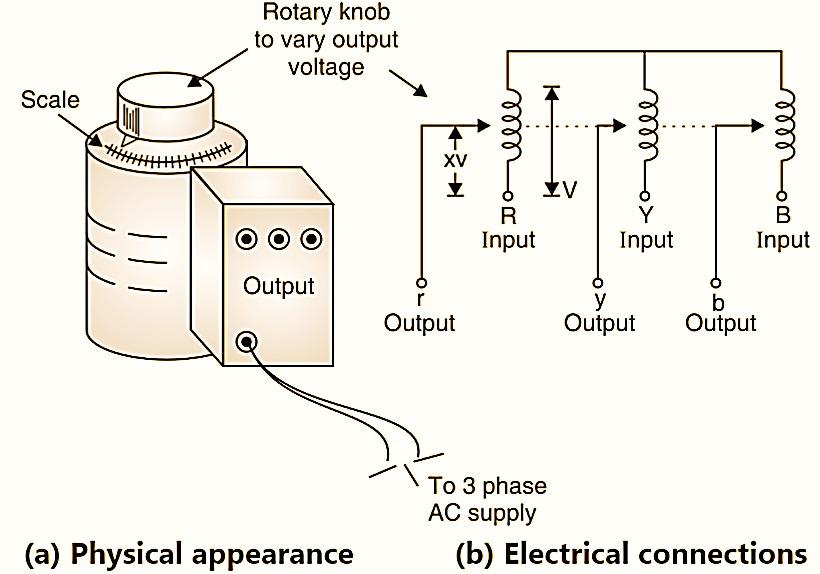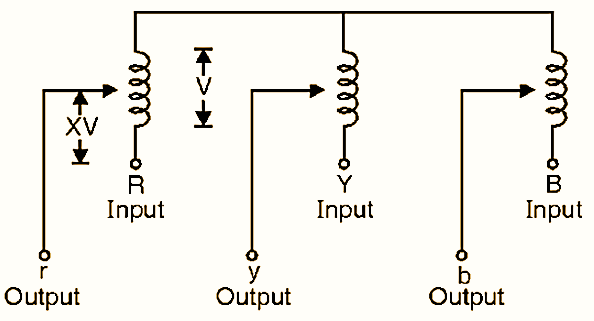The three phase autotransformer is a combination of three single phase autotransformers. It has three windings, one per phase.

Fig. 1 : 3 Phase Autotransformer.
Construction and Working Principle of Three Phase Autotransformer
Using a rotary contact which moves over each winding, we can change the 3-phase output voltage. Thus it is possible to vary the three phase output with a single rotary knob. (See Fig. 1(a)). Fig. 1(b) shows the electrical connections of the three windings. One end of all the windings is connected together. The other ends are connected to the 3 phase ac supply (R, Y, B). The variable point of each winding is brought out as output (r, y, b points in Fig. 1(b)). The dotted line in Fig. 1(b) shows that all the rotary (sliding) contacts are mechanically coupled to each other so that only one controlling knob can control the output voltage. As we move the sliding contact on each winding, the voltage XV will change. It is possible to use this as a step up or step down transformer.

Fig. 2 : Connection Diagram of Three Phase Autotransformer.
Sometimes instead of three windings, only two windings are used in the open delta connection as shown in Fig. 2.
Advantages of Three Phase Autotransformer
- Reduction in the copper required.
- The size and cost is reduced as compared to conventional transformer.
- Losses in the windings reduce so efficiency is higher.
- Better voltage regulation.
- Variable output voltage.
Disadvantages of Three Phase Autotransformer
- No electrical isolation between primary and secondary windings. It can prove to be dangerous.
- If the secondary circuit is shorted then a large current will flow on the secondary side.
Applications of 3 Phase Autotransformer
- To get variable output voltage.
- For smooth starting of ac machines.
- To vary the supply voltage (as per requirement) of a furnace.